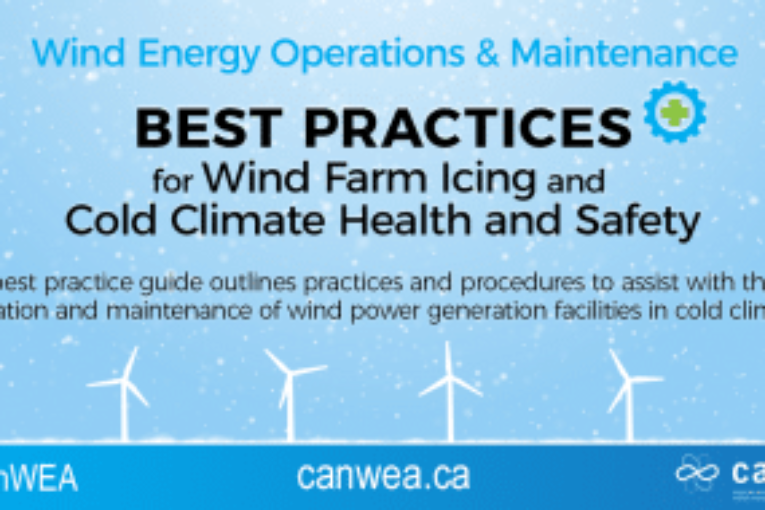
The world has seen unprecedented growth in wind energy over the past few years. More than 80 countries can now boast about having their own wind energy industry (GWEC, 2016). From deserts to the tropics and from mountains to open plains, modern wind turbine designs have been making wind energy available in almost every region on the planet. This is true in Canada’s vast landscape as well with wind turbines installed in all ten provinces and two territories. While not uniquely Canadian, those of us in the great white north can lay claim to our share of ice, snow and low temperatures.
As Canada’s wind fleet has grown, Canadian Wind Energy Association (CanWEA) members have been working diligently on the health and safety of workers in icing and cold climate conditions. Earlier this year the CanWEA Occupational Health and Safety Committee set out to develop a Safety Best Practices document that drew on the expertise of Canada’s cold climate wind operations. After eight months of compiling information, sharing procedures and collaborating on content, the CanWEA Icing and Cold Climate Safety Best Practices document is being released! We are very excited to provide this work to all Canadian wind energy facilities to encourage a safe, consistent and progressive approach to operations.
The document contains five main sections aimed at equipping wind turbine manufacturers, owners, operators, safety personnel and technicians with tools and concepts to consider as they maintain their fleet of machines. The main sections cover:
By starting with a set of definitions the aim is to establish language that will advance understanding and further collaboration around icing and cold climate operations. With the wind industry on the same page and detailed information available, companies can be intentional about sitting down and identifying opportunities to make their own procedures more robust. It was also identified that usability in the field is a priority. This is why decision-flow diagrams and tables were included to assist with those tough choices that may need to take place from a service truck and not just in a warm office.
We know that Canada’s leadership in cold climate operations will also benefit the global wind industry. As wind turbines continue to become a part of the landscape in more remote frontiers the need to protect the safety of frontline operations staff will expand. CanWEA is privileged to be doing our part to advance the health and safety of our proudly Canadian work force.
Table 16 gives an example of a sequence of decisions and actions that can be taken by a technician to evaluate the presence of ice on a wind turbine. Tools like this are useful for both new employees and experienced workers. For those unfamiliar with wind turbine icing the decision aide provides some important things to consider before approaching the turbine. Even the seasoned wind tech may miss one or two of these key considerations and could benefit from a consistent reminder to ensure the appropriate hazards have been acknowledged.
While the Safety Best Practices were developed by Canadian operators, for Canadian operators, we see an opportunity to take international leadership in this area. With very few if any resources of this type available globally, CanWEA is excited to contribute to the advancement of wind farm safety around the world. We are hopeful that the efforts made here will help encourage health and safety advancements in all countries where cold climate considerations are present.
Operations and Maintenance Program Director at the Canadian Wind Energy Association
You can read more of the news on source



